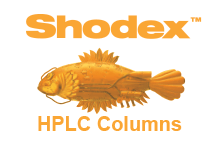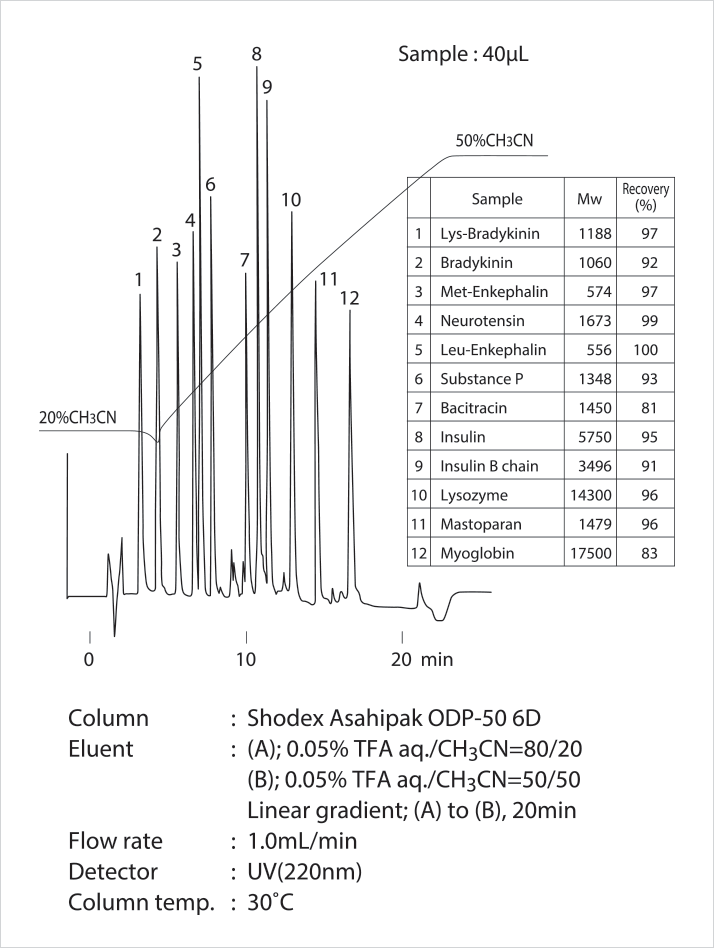Introduction
Over 60 % of all HPLC applications are Reversed Phase (RP) separations with C18 functional groups. Spherical silica particles proved their use as base material in HPLC columns for many years. To minimize the negative effects of residual silanol groups on the surface, researchers tried end-capping or polymeric coating of the particle and developed hybrid materials. Here we introduce an alternative for these ODS (octadecyl-bonded silica) RP columns:

A polymer particle (for example polyvinyl alcohol) with 4 or 5 μm particle size is modified with C18 alkyl chains as functional groups and used as stationary phase. This HPLC column has greater long term pH stability from 2 to 13. It contains no silanol groups and provides higher resolution for basic substances, for example drugs with tertiary amines (no peak tailing due to unwanted interactions). Also the polarity of the polymer gel is slightly more hydrophilic which gives more retention of polar compounds at the beginning of the chromatogram. The polymerbased RP material can be used in 100 % water or buffer and a variety of organic solvents (isocratic and gradient separation). It has a pore size of 250 Å which makes it suitable for the analysis of proteins and peptides. The very low bleeding is advantageous for the hyphenation to mass spectrometry (MS) or particle-sensitive light scattering detectors. A C18 column with a stationary phase made of polymer offers more than double the life time compared to silica, because it is chemically more resistant. Shodex is specialized in polymer-based packing material for Reversed Phase chromatography. The modern column Asahipak ODP (octadecyl-bonded polymer) combines all the advantages of a polymeric RP-C18 column. It is used for small organic molecules, pharmaceuticals, pesticides, hormones, proteins, vitamins and basic drugs.
Proteins and Peptides
The Asahipak ODP column has a bigger pore size of 250 Å and is ideal for the separation of molecules like proteins and peptides. Aqueous biological buffers can be used with 100 % and organic solvents like acetonitrile or methanol are recommended for flushing. The results show excellent elution volume reproducibility and a high recovery rate.






